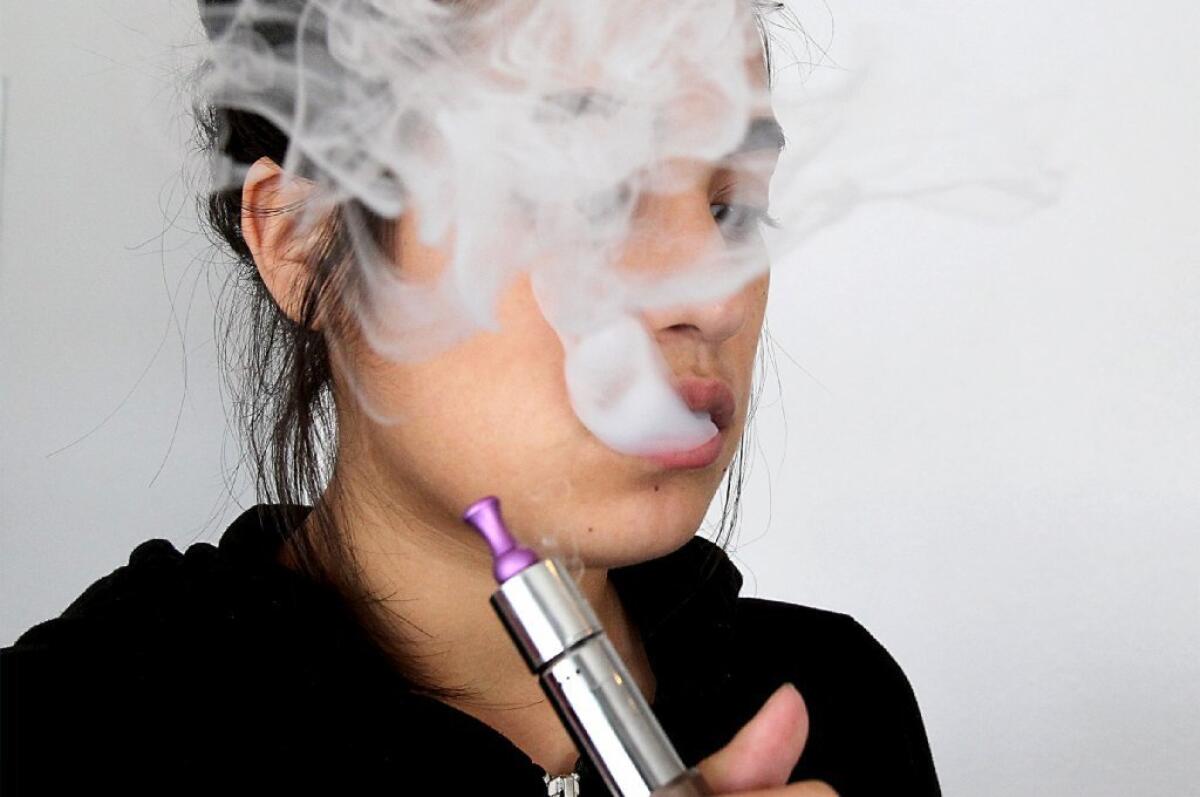Study offers support for the notion of e-cigarettes as a gateway drug

- Share via
Do e-cigarettes lure teens into a world of vice that turns them into smokers of regular cigarettes? This is the big fear of anti-smoking activists, and new data from Hawaii suggest they may be right.
A survey of 1,941 ninth- and 10th-graders from Oahu found that 29% of them had tried electronic cigarettes at least once, and that 18% of them had used the devices in the last month, according to a study published Monday by the journal Pediatrics.
These figures represent a substantial jump from e-cigarette smoking rates reported in earlier years. The Centers for Disease Control and Prevention’s National Youth Tobacco Survey, for instance, found that 10% of U.S. teens had tried e-cigarettes in 2012, up from 4.7% in 2011.
The fact that nearly 3 in 10 high school freshmen and sophomores in Hawaii had used the battery-powered devices was only part of the story. Among these students, 41% had also tried regular cigarettes, the survey results showed.
The researchers tried to come up with a psychological profile of these electronic cigarette users to see whether they would have been likely to steer clear of tobacco products if e-cigarettes didn’t exist. To that end, their survey asked students whether they “like to do things that are a little frightening” and whether they “like to break the rules,” among other questions.
Compared with kids who had never used e-cigarettes, the ones who had used both e-cigarettes and regular were more likely to take risks and less likely to score well on measures of “behavioral and emotional self-control,” the researchers found. These “dual-use” students were also less likely to be focused on school and to have supportive, engaged parents who might steer them away from risky activities such as smoking.
The students who had used e-cigarettes but not regular cigarettes occupied an intermediate spot on the risk spectrum, between the non-users and the dual users, according to the study.
That pattern was in line with the theory that teens try e-cigarettes because they are curious about them and see them as a safer alternative to conventional cigarettes. Having crossed that hurdle, they become “vulnerable to cigarette smoking,” the researchers wrote.
However, the data are also consistent with the theory that teens who use e-cigarettes are also inclined use regular cigarettes, marijuana and alcohol because “they provide a means of rebelling against conventional values” as well as “pleasant physical sensations,” the study authors wrote. In this view, e-cigarette use is merely a step on a path to “problem behavior” that the students were likely to follow anyway – and indeed, of the 15% of students who had smoked regular cigarettes, 80% had used e-cigarettes as well.
In the end, the Hawaii data can’t answer the key question of “whether low-risk youth are being recruited to cigarette smoking by being exposed to e-cigarettes and acquiring perceptions and attitudes favorable to smoking,” the study authors concluded. Until in-depth tracking studies can provide the much-needed answers, the idea that e-cigarettes are a gateway drug “must be considered in the ongoing debate” about regulating e-cigarettes, they wrote.
Follow me on Twitter @LATkarenkaplan and “like” Los Angeles Times Science & Health on Facebook.







